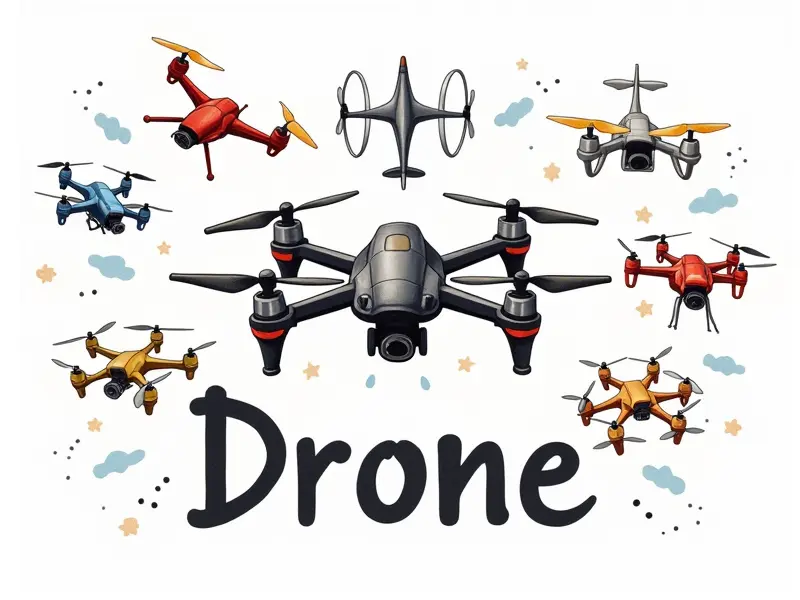How to protect a drone camera?

How to Protect Your Drone Camera: A Comprehensive Guide
If you're an avid drone photographer, protecting your camera is paramount. Whether you're shooting in harsh environments or simply want to extend the lifespan of your equipment, there are several ways to safeguard your drone's camera from damage and ensure clear, high-quality footage.
Protect Your Drone Camera from Scratches
A scratched lens can significantly degrade image quality. To prevent scratches, consider using a protective glass filter or a UV filter that doubles as a scratch guard. These filters are thin and transparent but offer robust protection against minor impacts and abrasions. Additionally, always store your drone in a padded case when not in use.
Anti-Fog Coatings for Clear Drone Footage
Fogging can be a major issue during cold weather or high humidity conditions. Anti-fog coatings are specially designed to prevent condensation on the lens surface, ensuring clear and uninterrupted footage. These coatings are easy to apply and maintain, making them an essential addition to your drone camera protection arsenal.
Key Features of Anti-Fog Coatings
- Quick Drying: Ensures rapid drying without leaving residue on the lens surface.
- Long-Lasting Protection: Provides durable anti-fog protection for extended periods.
- Compatibility: Works with various types of lenses and camera models.
Polarizing Filters for Better Drone Pics
Polarizing filters reduce glare and enhance color saturation, making your drone photos more vibrant and visually appealing. They are particularly useful when shooting in bright sunlight or over reflective surfaces like water or snow. By reducing unwanted reflections, polarizers help to reveal the true colors of your subjects.
Benefits of Polarizing Filters
- Better Contrast: Improves contrast and clarity in images.
- Reduced Glare: Minimizes glare from reflective surfaces.
- Natural Colors: Enhances the natural colors of objects, especially blue skies and green foliage.
Dust-Resistant Covers for Drone Cameras
Dust can be a major issue when shooting in dusty environments. Dust-resistant covers are designed to shield your lens from dust particles while allowing you to take photos or videos without interruption. These covers typically feature a clear, flexible material that adheres tightly to the camera body.
Features of Dust-Resistant Covers
- Flexible Material: Made from durable yet flexible materials like silicone or rubber.
- Easy Installation: Quick and easy to install, ensuring minimal downtime for your drone.
- Clear View: Allows you to see through the cover without any obstruction.
Waterproofing Your Drone Camera Easily
Waterproofing is crucial if you plan on flying over water or in rainy conditions. There are several ways to waterproof your drone camera, including using specialized lens covers and applying hydrophobic coatings. These solutions provide a barrier against moisture while maintaining optical clarity.
Methods of Waterproofing
- Lens Covers: Use waterproof lens covers designed for drones.
- Hydrophobic Coatings: Apply hydrophobic coatings to repel water droplets.
- Sealed Cases: Store your drone in a sealed, waterproof case when not in use.
UV Protection for Drone Cameras
Ultraviolet (UV) rays can degrade the quality of your camera's lens over time. UV filters are essential to protect against harmful UV radiation and enhance image clarity by reducing haze and improving contrast. These filters are transparent and do not affect the color or sharpness of your images.
Advantages of UV Filters
- UV Protection: Blocks harmful UV rays that can damage your lens.
- Enhanced Clarity: Reduces haze and improves overall image quality.
- Scratch Resistance: Provides an additional layer of protection against scratches.
Shockproof Solutions for Drone Lenses
Drones are often subjected to rough handling, which can lead to lens damage. Shockproof solutions such as reinforced glass filters and impact-resistant materials offer added durability against accidental drops or impacts. These solutions ensure that your camera remains functional even in challenging conditions.
Shockproof Features
- Reinforced Glass Filters: Made from toughened glass for extra protection.
- Impact-Resistant Materials: Utilize materials like polycarbonate or acrylic that absorb shock.
- Durable Construction: Ensures longevity and reliability of your camera equipment.
Night Vision Protectors for Drones
Night vision capabilities are becoming increasingly important in drone photography. To protect your night vision setup, use specialized filters that enhance infrared sensitivity while blocking unwanted light frequencies. These filters ensure clear and sharp images even in low-light conditions.
Features of Night Vision Filters
- Infrared Sensitivity: Enhances the camera's ability to capture IR light.
- Limited Light Transmission: Blocks visible light while allowing infrared wavelengths through.
- Durable Construction: Built to withstand harsh conditions and repeated use.
DIY Camera Guards for Drones
If you're handy with tools, consider creating your own camera guards using materials like foam or rubber. These DIY solutions can be customized to fit the specific dimensions of your drone's camera housing, providing a snug and secure fit that protects against scratches and impacts.
DIY Tips
- Select Appropriate Materials: Use soft yet durable materials like foam or rubber.
- Cut to Size: Measure your camera housing precisely before cutting the material.
- Secure Fit: Ensure a snug fit without obstructing lens movement or focusing mechanisms.
Extend Your Drone Camera's Lifespan
Maintaining your drone camera is key to extending its lifespan. Regular cleaning and maintenance, along with proper storage in dry conditions, can prevent wear and tear caused by dust, moisture, and other environmental factors. Additionally, using high-quality protective gear such as filters and covers will further safeguard your investment.
Best Practices
- Clean Regularly: Use lens cleaning solutions and cloths to remove dirt and fingerprints.
- Dry Storage: Store your drone in a dry, dust-free environment when not in use.
- Use Protective Gear: Always have filters and covers on hand for added protection.
Conclusion
Protecting your drone camera is essential to maintaining its performance and longevity. By implementing the strategies outlined above, you can ensure that your investment remains in top condition even under challenging conditions. Whether it's UV protection, waterproofing, or shockproof solutions, there are numerous ways to safeguard your equipment and continue enjoying high-quality aerial photography.
Remember, a well-protected camera is a happy camera!

